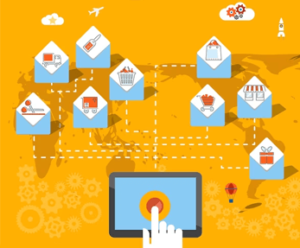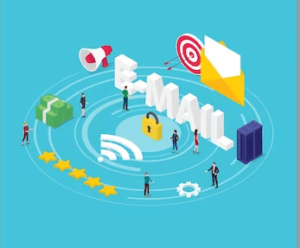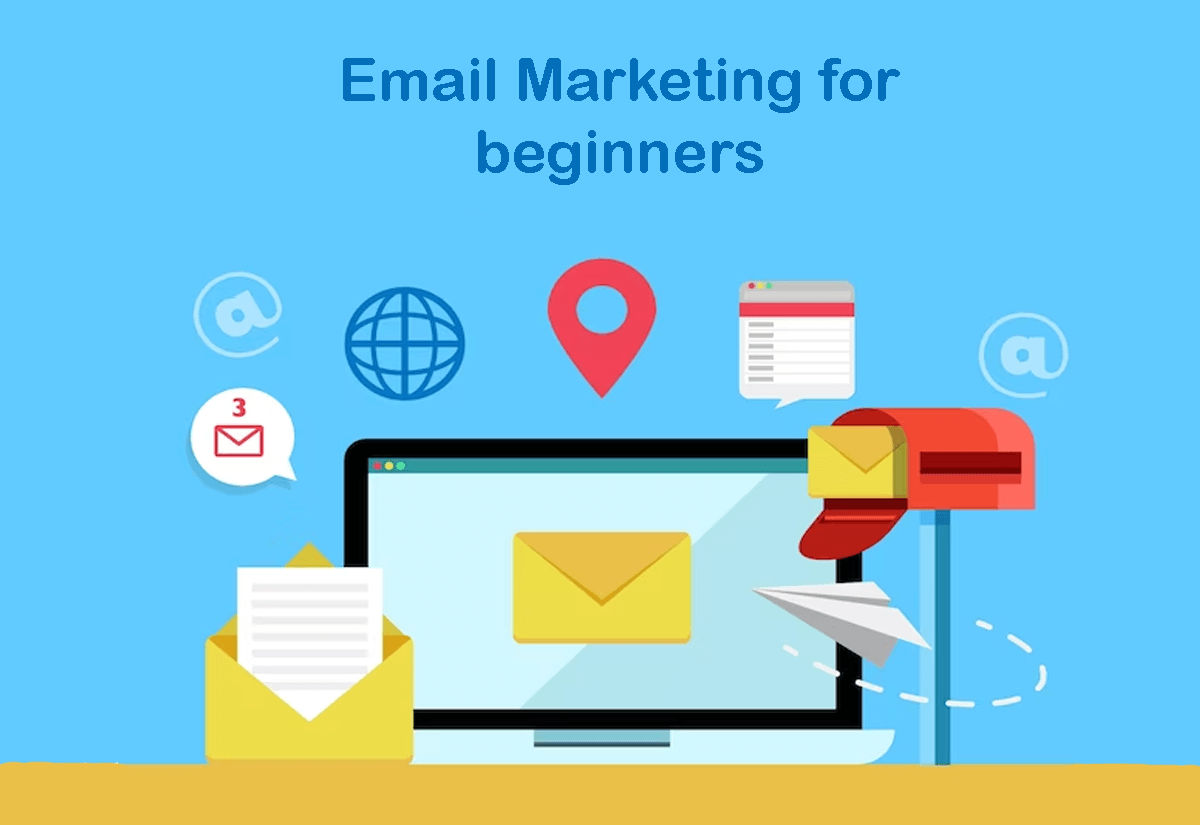What's Inside?
Introduction
Email marketing is a powerful digital marketing tool that allows businesses to reach their audience directly through their inbox. It involves sending promotional or informative messages to a list of subscribers who have opted in to receive communications from your brand. With email marketing, you can build relationships with your customers, drive traffic to your website, increase sales, and boost brand awareness.
To get started with email marketing, you’ll need to have a list of subscribers who have given you permission to email them. You can build your email list by offering something of value in exchange for email addresses, such as a free e-book or discount code. It’s important to remember that you should never buy an email list or add people to your list without their permission, as this can harm your reputation and result in spam complaints.
Once you have a list of subscribers, you can start creating email campaigns that are tailored to their interests and needs. This might include promotional emails that highlight new products or sales, newsletters that provide updates and insights, or automated emails that welcome new subscribers or follow up with customers after a purchase.
To make your email campaigns effective, you’ll need to craft compelling subject lines and content that grab your subscribers’ attention and encourage them to take action. You can also use email marketing tools to track open and click-through rates, segment your list based on subscriber behavior, and test different email elements to see what works best for your audience.
Email marketing can be a valuable tool for businesses of all sizes, as it allows you to connect with your audience in a personal and targeted way. With the right strategy and tools, you can use email marketing to build relationships, drive sales, and grow your brand.
Here are some key components of email marketing that beginners should be familiar with:
1. Building an Email List:
- The first step in email marketing is to build a list of subscribers who have opted-in to receive your emails. You can do this by offering incentives such as free downloads, discounts, or exclusive content in exchange for their email address. It is essential to get permission from subscribers before adding them to your email list.
2. Choosing an Email Marketing Service:
- There are various email marketing services available that can help you manage your email campaigns. These services provide features like email templates, automation, analytics, and subscriber management. Popular email marketing services include Mailchimp, Constant Contact, Aweber, and ConvertKit.
3. Creating an Email Campaign:
- Once you have built your email list and chosen an email marketing service, it’s time to create your email campaign. Start by defining your goals and identifying your target audience. Then, create an engaging subject line and design an attractive email template that matches your brand.
4. Personalizing Your Emails:
- Personalization is a crucial element of successful email marketing. You can personalize your emails by addressing subscribers by their first name, segmenting your email list based on their interests, and sending targeted emails based on their behavior.
5. Testing and Measuring Your Emails:
- It’s important to test your emails before sending them to your subscribers. This can include checking for typos, broken links, and making sure the email is mobile responsive. You can also measure the success of your email campaigns by tracking metrics like open rates, click-through rates, and conversions.
6. Following Email Marketing Best Practices:
- To ensure that your email marketing campaigns are effective, it’s important to follow best practices. These include avoiding spammy language, using clear and concise messaging, including a clear call-to-action, and sending emails at the right frequency.
Email marketing can be a valuable marketing tool for businesses of all sizes. By following best practices and implementing a well-crafted email marketing strategy, you can build stronger relationships with your customers and grow your business.
How to get email marketing lists?

It is recommended to build your email list organically by offering valuable content or incentives to your website visitors or customers in exchange for their email addresses. Some effective ways to grow your email list include:
- Adding a sign-up form to your website: Place a sign-up form prominently on your website, where visitors can easily provide their email addresses.
- Offering lead magnets: Offer a valuable resource, such as an ebook, whitepaper, or free tool, in exchange for an email address.
- Running a contest or giveaway: Encourage people to provide their email address by offering the chance to win a prize.
- Hosting events: Collect email addresses from attendees at events or webinars you host.
- Providing exclusive offers: Offer exclusive discounts or promotions to subscribers to incentivize them to sign up.
Growing your email list takes time and effort, but it will ultimately result in a more engaged and valuable audience for your email marketing campaigns.
How to practice email marketing?
Here are some steps to practice email marketing:
- Set goals: Determine what you want to achieve with your email marketing campaigns. Do you want to increase sales, drive traffic to your website, or build brand awareness?
- Build your email list: Collect email addresses from your customers and prospects by offering incentives such as free downloads, exclusive content, or discounts.
- Choose an email marketing platform: There are many email marketing platforms available, such as Mailchimp, Constant Contact, and AWeber. Choose the one that best fits your needs and budget.
- Design your email templates: Your email templates should be visually appealing, easy to read, and mobile-friendly. You can use pre-designed templates or create your own.
- Create your content: Your email content should be informative, engaging, and relevant to your audience. Use a clear and concise writing style and include a clear call-to-action.
- Segment your audience: Segment your email list into different groups based on their interests, behavior, and demographics. This will allow you to send targeted and personalized emails.
- Test and optimize: Test different subject lines, email content, and calls-to-action to see what resonates best with your audience. Use A/B testing to compare different versions of your emails.
- Track your results: Use analytics to track the performance of your email campaigns. Monitor open rates, click-through rates, conversion rates, and unsubscribe rates to see what’s working and what’s not.
By following these steps, you can effectively practice email marketing and drive results for your business.
How Email Marketing Works
 Email marketing typically involves the following steps:
Email marketing typically involves the following steps:
- Building an email list: This involves collecting email addresses of people who have expressed interest in receiving communication from your business. You can collect email addresses through opt-in forms on your website, landing pages, social media, or in-person events.
- Creating an email campaign: This involves crafting an email message that is targeted to a specific audience and aligned with your marketing goals. Email campaigns can take various forms such as newsletters, promotional emails, automated drip campaigns, and more.
- Choosing an email marketing service provider: An email marketing service provider helps you manage your email list, create and send email campaigns, track email performance, and comply with email marketing regulations. Popular email marketing service providers include Mailchimp, Constant Contact, and AWeber.
- Sending your email: Once you have created your email campaign and chosen your email marketing service provider, you can send your email to your subscribers. You can choose to send your email immediately or schedule it for a later time.
- Tracking and analyzing results: After sending your email, you can track and analyze the performance of your email campaign using data such as open rates, click-through rates, bounce rates, and conversions. This information can help you improve future email campaigns and achieve your marketing goals.
Email marketing is an effective way to reach and engage with your target audience, build brand awareness, and drive conversions. However, it requires careful planning, strategy, and execution to achieve success.
What Makes a Good Lead Magnet?
A good lead magnet is an incentive that is offered to potential customers in exchange for their contact information, such as their email address. The goal is to provide value to the customer and build trust with them, ultimately leading to a sale or conversion. Here are some characteristics of a good lead magnet:
- Solves a problem: A good lead magnet should offer a solution to a problem that your potential customers are facing. It should address a pain point and provide valuable information or resources that will help them overcome it.
- Relevant to your audience: The lead magnet should be relevant to your target audience and the specific niche you are targeting. It should align with their interests, needs, and goals, and provide information or resources that they are looking for.
- Provides immediate value: The lead magnet should provide immediate value to the customer. It should be something they can use right away, such as a checklist, template, or guide that helps them achieve their goals or solve their problems.
- Easy to consume: The lead magnet should be easy to consume and not require too much time or effort from the customer. It should be presented in a clear and concise format, such as a PDF or video.
- Unique and high quality: The lead magnet should be unique and of high quality. It should stand out from other lead magnets in your industry and provide information or resources that are not easily found elsewhere.
- Aligns with your business goals: The lead magnet should align with your business goals and target a specific stage of the customer journey, such as awareness, consideration, or decision. It should also lead the customer towards your product or service offering.
By creating a good lead magnet, you can attract potential customers and build a strong email marketing list. Remember to focus on providing value to your customers and building trust with them, and you will see the benefits of a successful email marketing campaign.
Email Marketing for Beginners FAQs
- 8 am to catch people's attention early in the morning
- 1 pm, during or after lunchtime
- 4 pm, when people may have some free time or be browsing online
- Nevertheless, there is no universal best time. The most efficient approach is to test various times and days with your email lists to determine what works best for your specific audience.


